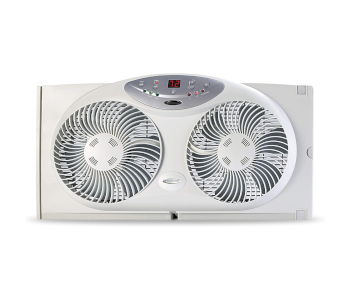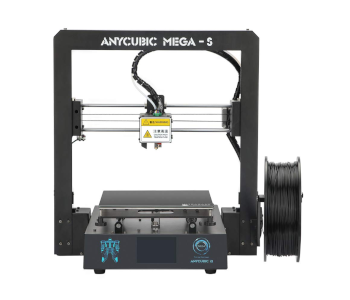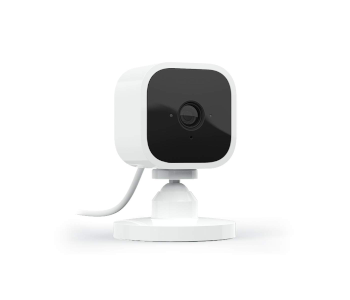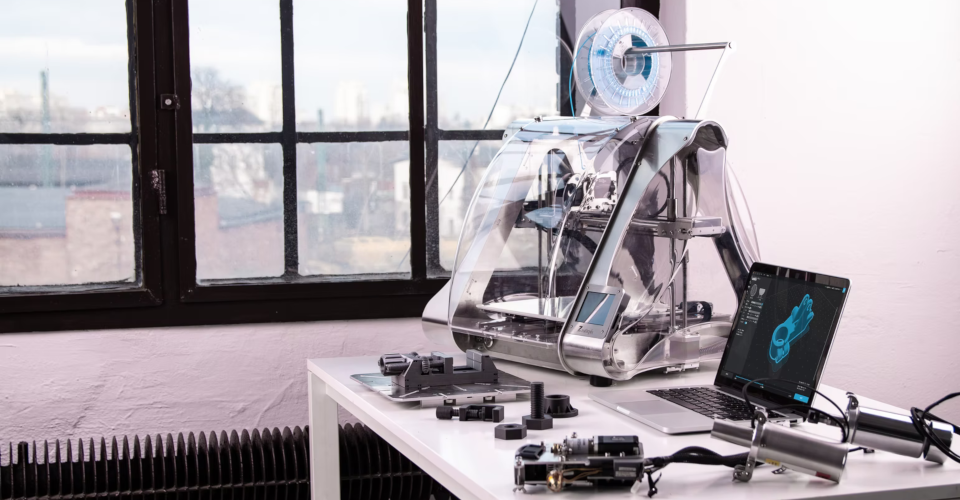Where Should You Place Your 3D Printer In Your Home?
As hobby 3D printing has become more popular, we also find more people placing 3D printers somewhere in their house. This situation begs the question – how safe it is to place a 3D printer in a room in your house? What factors should you consider?
A 3D printer should be placed in a room with good ventilation, away from flammable material, and is not accessible to kids and pets. There are also other minor factors to consider. With this in mind, it would be best to place a 3D printer in an isolated workshop, typically a garage, laundry room, or hobby room.
In most cases, you will still need to do some retrofitting to make a space in your house suitable for 3D printing. To help you prepare your space, check out our list of factors you may overlook and our guide on what a suitable space should have.
Factors to consider in setting up a 3D printer
Modern 3D printers are wonderfully compact. While this has been a great selling point for inexpensive 3D printers, some people may end up underestimated just how much physical space a 3D printing hobby can occupy. Here are some factors to anticipate when setting up a 3D printer
Fumes

When plastic is exposed to heat, it will almost always release some fumes. Some of these fumes may be irritating, while others may be more benign (or even pleasant). However, you should always assume that inhaling such fumes is harmful to you.
There are two ways to address this problem. If you buy a 3D printer with an enclosure, it will probably have a vent provision with a HEPA filter. It should be relatively easy to connect a flexible accordion pipe to this vent and redirect it to an open window or a hole in the wall. Just make sure to check the status of the HEPA filter periodically.
The more common scenario involves a printer that does not have an enclosure. In this case, 3D printing will have to be done in a room with very good ventilation. An open door or a few open windows should do the trick.
Noise
Do you already have a preconceived notion in your head of how noisy a 3D printer is? In reality, a 3D printer is probably going to be even noisier than that. Considering how large 3D printing jobs can take 12 hours or more to finish, placing a 3D printer in a room where peace and quiet are needed is going to be a very bad move.
For this reason, we do not recommend placing a 3D printer in your bedroom, living room, or any space in your house where people normally stay in for long periods.
Storage space
That 3D printer may seem small, but don’t forget that you will also be buying spools of filaments, bottles of resin, plus an array of different tools and supplies. This will inevitably take up much more space than the 3D printer itself. If you don’t plan ahead for storage space, you will almost certainly end up with 3D printing supplies encroaching into your living space.
Mess
There’s no way around it – 3D printing is a hobby that can create a lot of mess. Whether it’s empty filament spools, empty resin bottles, plastic dust, removed supports or rejected prints, you will inevitably accumulate scrap materials whenever you work on a 3D printed project.
Keeping your 3D printer in an isolated room helps keep the mess contained in one place. As much as we love 3D printing, we would not want to find 3D printing scraps all over the house.
Other hazards

3D printing has a slew of other hazards depending on the type of 3D printer you are using. FDM printers generate a lot of heat and must be kept away from flammable materials. Resin printers are inherently dangerous because they use photopolymer resin – a toxic compound in its uncured state.
These hazards highlight the importance of restricting access to a 3D printing workshop, especially for households that have kids or pets. You will not want to rush to the emergency room just because you left your 3D printer unattended.
Tips on setting up your 3D printer
The garage is the best option
If you have enough space in your garage, then it would probably be the best place to set up a 3D printer. Not only does a garage typically have lots of space for your tools and supplies, but it’s easy to provide ventilation by opening some windows or the garage door itself.
Another advantage of using the garage is that it’s typically detached from the rest of the living space. This means that you and your family won’t be bothered by the noise and unpleasant fumes from the 3D printer while it is running.
A home office, laundry room, or basement can also work
If a garage is not an option, then some other rooms inside the house can be considered. A home office or laundry room can be viable since these are not areas of the house where people stay for long periods. You can set up a 3D printing job and step out of the room while it runs.
The basement is another good option if you have enough space. It’s isolated enough from the house that you probably won’t hear any noise from the 3D printer. Just make sure that you don’t have flammable materials stored in the basement. Another potential problem is that most basements have poor ventilation.
Consider placing fans
Not all rooms in your house may have enough ventilation to ensure a continuous flow of fresh air. If this is the case, an easy solution would be to set up fans in your windows.
Nowadays, it’s easy to buy windows that can fit most standard-sized fans. This window fan by Bionaire is designed for reversible airflow, so you can use it as either an air inlet or an exhaust.
Set up a monitoring camera

A common piece of advice is that people should not be lingering in the same room as a 3D printer while it is running. This lessens the risk of inhaling toxic fumes or plastic micro-particles. However, we also understand that watching a model as it is being built is an essential part of the 3D printing experience.
A good middle-ground remedy is to set up a wireless camera so that you can monitor it remotely. An inexpensive security camera, such as a Blink Mini, should work. With a remote camera, you can keep an eye on your 3D printing project even while it is in an isolated location as you go about your day.
Limit access to your workspace
An important reason for isolating your 3D printer is making sure that kids and pets can’t just go near it without your supervision. This is easier to do in detached workshops but should still be implemented for basements or home offices. If you have kids walking around the house, just make sure to lock the door behind you.
This does not mean that you should not involve your kids in your 3D printing hobby. In fact, it’s probably better for them to watch you work with your 3D printer. Safety should be one of the more important lessons, and part of this is knowing that they should not touch the 3D printer without your supervision.
These tips only consider safety and practicality when choosing a spot for your 3D printer. Other factors may affect the quality of your output or supplies. If you print with filaments, it would be better to place your workshop in a room with low humidity. If you print with resin, make sure that your workspace is not under direct sunlight.
A lot of these tips may seem obvious to anyone who has had substantial experience with 3D printing. For those who are just starting out, doing a healthy bit of research before committing to a space can save you lots of headaches down the road.
Final thoughts
3D printing is an amazing hobby, but it should not be taking over the rest of your life. When choosing a spot for your 3D printer in your home, make sure to place it in a room that is isolated and will not interfere with your normal living conditions.
If you plan on taking this hobby seriously, then you will likely end up building an entire workshop for your equipment and supplies. This is something you can plan ahead for.


